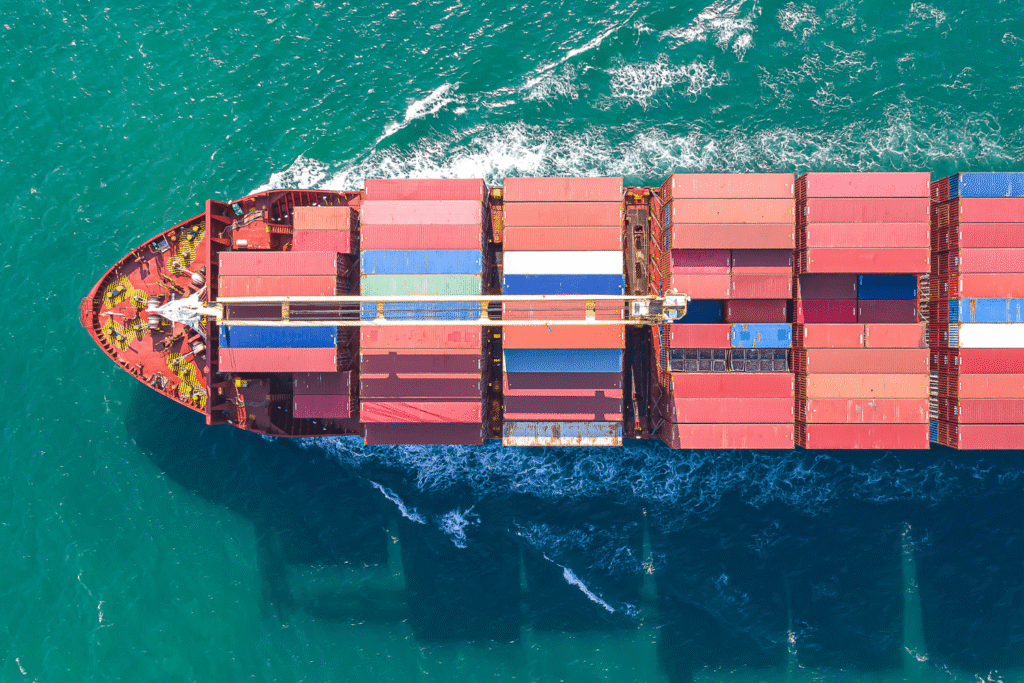In the fast-paced world of Consumer Packaged Goods (CPG), supply chain disruptions have become a pressing challenge that companies must confront. These interruptions can arise from various factors, including natural disasters, geopolitical tensions, and logistical inefficiencies, leading to significant consequences for product availability and business operations. Delve into the causes and effects of supply chain disruptions in the CPG industry and explore how digital transformation—specifically through technologies like ERP—can serve as a solution.
Understanding the Causes of Supply Chain Disruptions in the CPG Industry
Natural Disasters and Geopolitical Tensions
Natural disasters such as hurricanes, floods, and earthquakes can wreak havoc on supply chains, causing delays and stockouts. Similarly, geopolitical issues like trade wars, international conflicts, and more recently, the longshoremen strike can result in port closures and increased tariffs, further complicating the movement of goods. These logistical challenges can result in longer lead times for production and fulfillment, which ultimately have negative financial implications.
Inefficient Inventory Management
Product availability is crucial for meeting customer demands, and disruptions can lead to costly stockouts. Traditional inventory management systems may struggle to provide the real-time visibility necessary for effective decision-making. According to a study from Fictiv, 55% of manufacturing-related businesses cite improving supply chain visibility as a top priority, emphasizing the need for better tracking of goods and supplier readiness forecasting to mitigate disruptions.
Importing, Customs, and Duties
The CPG industry heavily relies on imported raw materials and finished products. Disruptions in global supply chains can lead to delays in customs processing and unexpected tariffs, which can significantly increase costs. As tariffs fluctuate, companies must adapt their pricing strategies to maintain competitiveness. A staggering “50% of senior executives” across various industries reported that their companies are passing higher supply chain costs onto consumers, further complicating the landscape.
The Results of Supply Chain Disruptions
The implications of supply chain disruptions are far-reaching and multifaceted. Companies may experience financial costs, opportunity costs, and even reputational costs.
Customer Experience Impact
Stockouts can lead to dissatisfied customers and lost sales. A seamless supply chain is essential for meeting consumer expectations, particularly in an era where same-day or next-day delivery has become the norm. If a customer cannot find a product when they need it, they may turn to competitors.
Increased Operational Costs
Supply chain disruptions often lead to increased costs associated with transportation, storage, and procurement. For instance, during significant disruptions, transportation costs can surge due to delays and rerouting. Companies may also feel the need to maintain larger inventory buffers, which can tie up capital and reduce liquidity. This is a precarious issue as “national storage pricing has increased by 1.4% month-over-month,” intensifying the cost implications of holding excess inventory. Therefore, effective cost management becomes critical for maintaining profit margins.
Erosion of Competitive Advantage
CPG companies that fail to adapt quickly to supply chain challenges risk losing their competitive edge. The shift toward eCommerce means that consumers have more choices than ever, making it essential for companies to maintain product availability and efficient delivery in order to retain customers.
Embracing Digital Transformation
To navigate these complexities and alleviate the pains of supply chain disruptions, CPG companies must embrace digital transformation. This includes adopting technologies that enhance visibility, improve forecasting, and streamline operations. Here are several key components of a successful digital transformation strategy:
- Enhanced Visibility and Real-Time Analytics: Digital tools that provide real-time insights into inventory levels and supply chain performance can significantly improve decision-making. Companies should leverage technologies like the Internet of Things (IoT) for enhanced visibility, allowing them to monitor goods in transit and anticipate potential disruptions.
- Advanced Forecasting Techniques: Utilizing Artificial Intelligence (AI) for predictive analytics can help CPG companies better understand demand patterns and adjust production schedules accordingly. A survey found that approximately 85% of leaders in supply chain and manufacturing plan to adopt AI technologies to bolster resilience and efficiency.
- Centralized Product Information Management: Product Information Management (PIM) systems play a critical role in ensuring that accurate product data is available across all channels. By centralizing product information, companies can reduce discrepancies that may arise from manual data entry, ensuring compliance and facilitating smoother operations. The implementation of PIM systems can lead to improved inventory accuracy rates, which is crucial during disruptions.
- Effective Cost Accounting: A dynamic and flexible approach to budgeting is essential in the volatile landscape of CPG. Accurate cost accounting provides the data needed to make informed strategic decisions, such as diversifying suppliers or optimizing inventory levels. This adaptability can help companies navigate unexpected financial pressures and maintain profitability. In fact, companies using advanced cost accounting techniques have reported a 30% improvement in budget accuracy during disruptions, demonstrating the importance of adaptability in financial planning.
Leveraging Third Wave and SAP for Success
An ERP solution like SAP Business One can significantly facilitate the digital transformation journey for CPG companies. By integrating various business processes, including inventory management, financial accounting, and customer relationship management, SAP Business One offers a comprehensive view of operations. This centralized system enables real-time data analytics, allowing businesses to make informed decisions quickly.
Having a trusted partner like Third Wave is paramount for companies navigating the ERP implementation process. With industry expertise and a deep understanding of the CPG landscape, Third Wave specializes in leveraging SAP Business One and other digital solutions like Versago and Bizweaver to help businesses streamline operations, enhance supply chain visibility, and improve overall efficiency. This support from trusted advisors ensures that CPG companies are well-equipped to handle the challenges posed by supply chain disruptions.
- Bizweaver – Bizweaver automates processes and streamlines production management by synchronizing workflows across the organization. It serves as a hub for all the transaction information flowing in and out of your business.
- Versago – Versago streamlines digital communication by connecting departments, channels, partners, employees, and locations with SAP Business One data. It gives you the flexibility to streamline collaboration and address specific issues with optimization, resource allocation, and more.
- Container Management – The process of managing multiple shipments across various suppliers to ensure compliance with international trade regulations can be intricate. SAP Business One streamlines this complexity by centralizing documentation, automating customs procedures, and providing real-time visibility into shipment statuses. This enables businesses to track goods from origin to destination, minimizing delays and optimizing logistics.
While supply chain disruptions continue to present formidable challenges for CPG companies, the ability to adapt and respond to disruptions is more critical than ever. By embracing digital transformation strategies and leveraging emerging technologies, companies can navigate these challenges more effectively. Connect with Third Wave today to explore how SAP Business One can help you master the challenges of your supply chains and emerge stronger.


